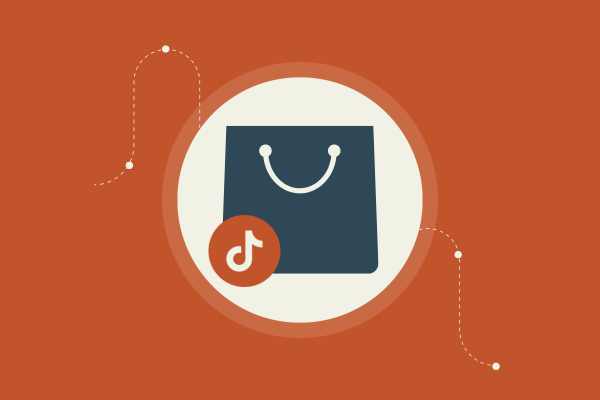Is a Negative Cash Conversion Cycle Hurting or Helping Your eCommerce Biz? Unpack the Impact Now!
Running an eCommerce business means dealing with numbers. One number that can make or break your cash flow is the cash conversion cycle (CCC). A negative cash conversion cycle actually helps your business by boosting cash flow. This lets you reinvest money faster and stay ahead of the competition.
Imagine having more cash on hand because your customers pay you before you have to pay your suppliers. That’s the power of a negative CCC: the ability for fast-paced growth without getting stuck in a cash-strapped situation.
But watch out! While a negative CCC sounds like a dream, it can also signal risky practices if not managed well.
Key Takeaways
A negative CCC boosts cash flow and growth.
Poor management of a negative CCC can signal risk.
Efficient strategies turn negatives into positives.
Understanding the Cash Conversion Cycle
The cash conversion cycle (CCC) is a key financial metric for businesses. It measures how efficiently you manage your inventory and cash flow. Mastering it can boost your eCommerce success.
Breaking Down the CCC
The CCC calculates the time it takes to turn investments in inventory into cash flow. It’s made up of three parts: days sales outstanding (DSO), days inventory outstanding (DIO), and days payables outstanding (DPO).
DSO measures how quickly you collect from accounts receivable. You want this number low. Fast collections mean more cash in your pocket.
DIO shows how long inventory sits before it's sold. Move products quickly to keep cash flowing.
DPO tells you how long you can take to pay suppliers. A higher number can improve liquidity.
When you take DSO and DIO, then subtract DPO, you get the CCC. A shorter CCC indicates efficiency. It means less time to free up cash, leading to better financial health.
The Relevance of CCC for Your eCommerce Biz
For eCommerce, CCC is crucial. It directly affects cash flow and profitability.
Fast cash flow gives you the ability to reinvest in new stock or marketing. A negative CCC means your accounts payable are higher than your receivables and inventory costs. This can be a boon if managed well.
Imagine getting paid by customers before paying your suppliers. That's the sweet spot.
Keep an eye on these metrics. DSO, DIO, and DPO can make or break your game. Balance them well to ensure smooth operations. It’s not just numbers; it’s your business lifeline.
Efficient CCC management can lead to stronger growth and less stress over cash shortages. Pay attention, make adjustments, and watch your eCommerce business thrive.
The Perks of a Negative Cash Conversion Cycle
A negative cash conversion cycle (CCC) can be a game-changer for your eCommerce business. It turns the typical cash flow process on its head, allowing you to use incoming funds more effectively. It's all about liquidity, growth opportunities, and keeping that working capital flowing.
Turning the Tables: How Negative CCC Fuels Growth
Imagine your business getting cash from customers before you even have to pay suppliers. That's the power of a negative CCC. You're basically borrowing from your customers interest-free. This means you're free to invest in growth opportunities without draining your cash reserves.
For eCommerce, this opens doors. You can expand your product lines, improve marketing efforts, or enter new markets. It also gives you padding against market swings. This financial flexibility is huge. It lets you think big and act boldly.
Impact on Liquidity and Working Capital
With a negative CCC, your liquidity jumps up. Cash inflows happen faster than cash outflows, which means more money is available to you. This boosts your working capital and keeps your operations smooth.
Increased liquidity also means you can handle unexpected costs or take advantage of surprise deals. This keeps your business resilient and adaptable. Companies like Amazon have mastered this, maintaining a streamlined cash flow that supports sustainable growth. Your business can do the same with the right strategy.
Red Flags in Cash Flow Management
Managing cash flow is like fine-tuning an engine. One wrong move, and it sputters. When you spot issues like stretched payment terms or shaky supplier relationships, it's time to rethink your strategy.
When Negative Becomes a Nuisance
Negative cash conversion cycles sound cool, right? Cash rolls in before you even pay for your inventory. Yet, this can turn ugly fast.
Imagine you're paying suppliers late. This strains relationships and could mess with your supply chain. Relying too much on such cycles can also mean your business isn't self-sufficient. It might mask underlying problems, like poor sales or excessive dependence on external financing. Watch your metrics closely. If cash flow seems off despite a negative cycle, dive into the details. Look for consistent late payments and mounting debts. Fix them before they avalanche into a business nightmare.
Rethinking Payment Terms and Supplier Dynamics
Payment terms are your contract lifeline with suppliers. Ever felt like suppliers are bleeding you dry? It might be time to renegotiate.
Long payment terms might pinch your cash flow. But not if you adjust them for a win-win with suppliers. Chat it out. Align interests with timely payments and discounts for early settlements. Cultivate strong supplier relationships to keep inventory flowing smoothly. This builds goodwill and a stable cash flow. Don't be shy to ask for better terms. The stronger the partnership, the better your cash flow game. Keep in touch, understand their needs, and work to ensure mutual success.
Operational Efficiency and Inventory Control
Managing your inventory efficiently is a game changer. A negative cash conversion cycle can actually be a blessing if you handle your stock well. It’s about getting the right balance between enough inventory and keeping costs down.
Inventory Management that Makes or Breaks
Inventory can either fuel your growth or drain your resources. To make it work, streamline inventory management by using just-in-time inventory practices. This means you keep only what you need. No more, no less.
Keep an eye on inventory costs because holding too much eats into your profits. Avoid overstocking by understanding your sales trends and using them to forecast accurately.
Using accounting software helps track what’s in stock and what’s needed. This cuts out manual errors and saves time. You want smooth, automated processes that keep everything in check. Learn from leaders who have mastered this craft to pump up your eCommerce game.
Leveraging Technology for Better Inventory Turnover
Tech is your best friend here. Use it wisely. By implementing advanced tools, you boost your inventory turnover rate.
Use software that integrates with sales data to make quick decisions. Technology helps you get real-time updates, making adjustments easier and faster. Simplify order processing to avoid dead stock sitting around.
Explore automation solutions to place orders automatically when stock runs low. These systems can analyze data and predict demand. The result? More efficient stock levels and reduced waste.
You’re not just selling products—you're building efficiency. With the right tech, your eCommerce business thrives.
Strategies to Improve Your eCommerce CCC
Want to supercharge your cash conversion cycle (CCC)? You've got to focus on two key areas: better handling of your payments and finding smart financing options. Let's break it down.
Tweaking the Process from Purchase to Payables
Optimizing the way you buy and pay can make a huge difference. Start by negotiating longer payment terms with suppliers. A deal like 30/60/90 payment terms gives you more breathing room. With more time, you can sell your goods before your payment is due, boosting cash inflow.
Next, streamline your purchase orders. Cut down any unnecessary steps. Use automated systems to speed up processing and tracking. This also reduces human error.
Watch your receivables like a hawk. Make it easy for customers to pay quickly. Offer multiple payment options and send reminders.
Aim for a lean and efficient system. Every day saved means more cash staying in your pocket. Keep tweaking until you find that sweet cash conversion cycle formula.
Innovative Financing Options to Stay Ahead
Sometimes you need extra cash to keep things rolling. That's where innovative financing options come in. Traditional loans are fine, but let's think outside the box.
Consider invoice financing—sell your receivables to get cash upfront. It keeps cash flowing, especially when waiting on payments.
Lines of credit offer flexible borrowing. Use them when cash outflows don't match up with inflows. No more headaches about timing.
Crowdfunding is another option. Get customers to invest in new product ideas. It’s a fascinating way to engage with your audience and raise funds.
These financing options open growth opportunities. You can invest in inventory, expand your reach, and tackle larger orders. Stay agile and use the best tools to win.
Case Studies: Negatives Turned Positive
In the world of eCommerce, a negative cash conversion cycle (CCC) can be your secret weapon. Some companies are turning it into serious success. Let’s dive into how Amazon and Gymshark are reaping the benefits.
Amazon: A Giant's Game With CCC
Amazon’s mastered the art of playing with the negative CCC. They do this by selling products fast and negotiating longer payment terms with suppliers. Here’s the magic: they get your cash first and pay later. This cycle lets Amazon keep fueling its growth without using its own money.
While their inventory flies off the shelves, Amazon fosters cash reserves. This financial juggling act allows them to invest in new ventures before paying suppliers. Their model is built on speed and efficiency, turning potential drawbacks into a competitive edge.
By understanding the negative cash conversion cycle, Amazon stays ahead in the eCommerce race. It’s like having a cheat code for cash flow.
Gymshark & Dropshipping: New Age Models
Gymshark has followed another unique path, getting creative with dropshipping. They keep inventory lean by letting third parties handle stock, almost like a middleman. This setup keeps costs low and agility high.
By letting someone else hold the goods, Gymshark doesn’t lock up cash in stock. Their approach relies heavily on brand loyalty and marketing prowess. For an eCommerce business like Gymshark, managing a slim CCC with dropshipping gives them a sharp edge.
As an eCommerce player, your goal might be similar: keep money moving and minimize risks. Gymshark’s approach shows how innovative models can flip potential negatives into big positives. It's new-age thinking at its finest.
Balancing the Books: Financial Health and CCC
Understanding how the Cash Conversion Cycle (CCC) impacts your eCommerce business is crucial. It's about managing cash flow and ensuring long-term sustainability while keeping an eye on the financial health of your operations.
Keeping Cash Flows in Check
The CCC is like the heartbeat of your business. It shows how fast you can turn investments into cash. If you mess this up, you might find yourself scrambling for funds. That's not a fun place to be. Good financial management means knowing how to balance your cash flows effectively.
To get there, focus on reducing holding costs and improving payment terms with suppliers. You want cash coming in faster than it goes out. This keeps your cash balance healthy and gives you room to maneuver. Always be looking at your financial statements. These will tell you if you're on track or if adjustments are needed. Stay sharp. Tracking these numbers helps keep your business from running into trouble.
The Long-Term Perspective
In business, thinking about long-term sustainability is key. Short-term gains are nice, but planning for the future is where the real game is. A negative CCC can be a strategic advantage, giving you more flexibility with your working capital. This means you can reinvest in growth without worrying about cash shortages.
To pull this off, develop a solid understanding of your financial health. Use insights from your CCC to make informed decisions about inventory, sales, and capital investments. Don’t just chase trends. Keep your eyes on the prize and make every move count. When you handle your CCC wisely, you're not just balancing the books—you're setting the stage for success.
Prepping Your Business for the Future
Get ready for tomorrow by sharpening your tools today. It's all about using data smartly and mastering those preorders and payments to give your eCommerce business a real edge.
Harnessing Data for Better Decisions
You know data is power, right? Use it smartly, and it’s like having a crystal ball for your ecommerce business. Focus on customer behavior and spending trends to predict future needs. Dive into sales data to pinpoint hot products and understand what’s not working. Using these insights, tweak your inventory and marketing tactics to increase profitability.
Imagine a data dashboard giving you real-time insights. Trends tell you when to stock and when to hold off, keeping your positive cash conversion cycle in check. Numbers aren’t just numbers; they’re gold.
Scoring Big With Preorders and Payment Processing
Preorders are your secret weapon. They not only generate hype but also provide early cash flow. This means you rely less on a credit line.
Offer exclusive early-bird deals to tempt buyers. It’s like taking a winning shot before the game even starts.
Now, let's talk payment processing—fast and simple wins consumers.
Handle different payment options like credit cards, PayPal, and even digital wallets. This flexibility can boost conversions and keep the cash flowing smoothly.
Efficient processing shows customers you're legit and reliable. It’s a win-win for everyone!







